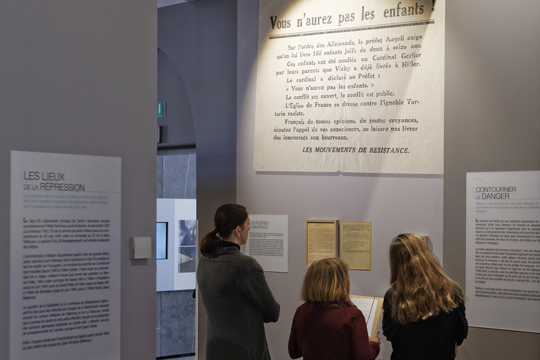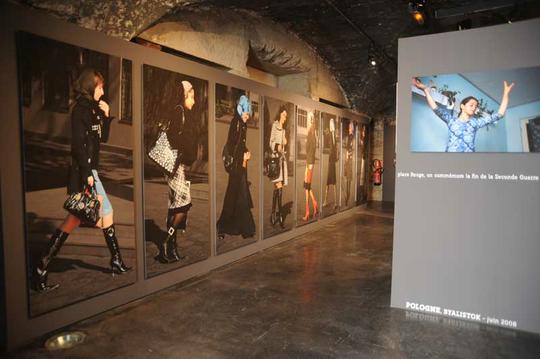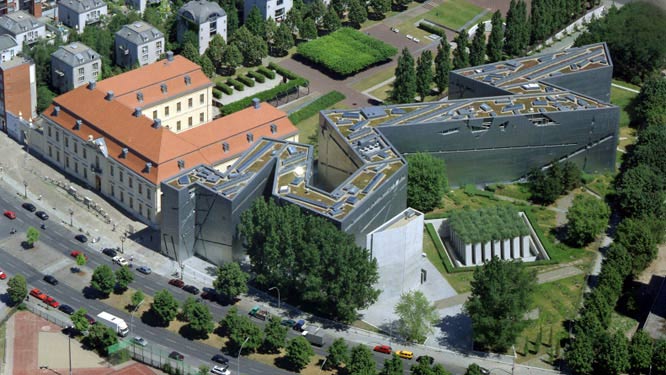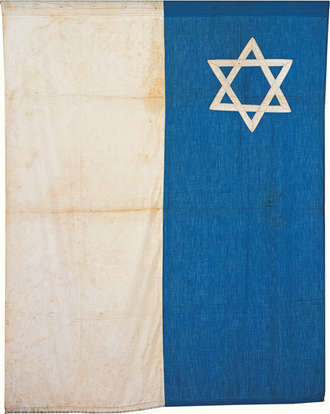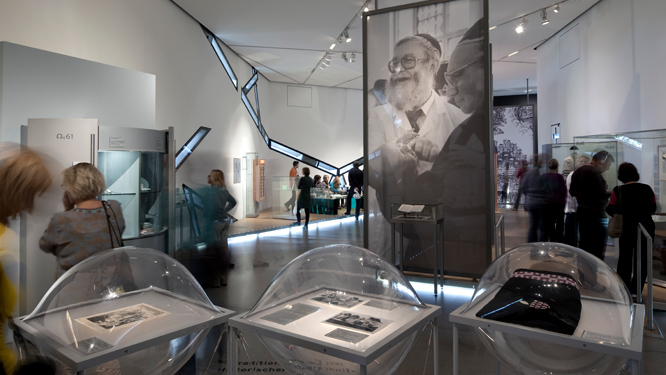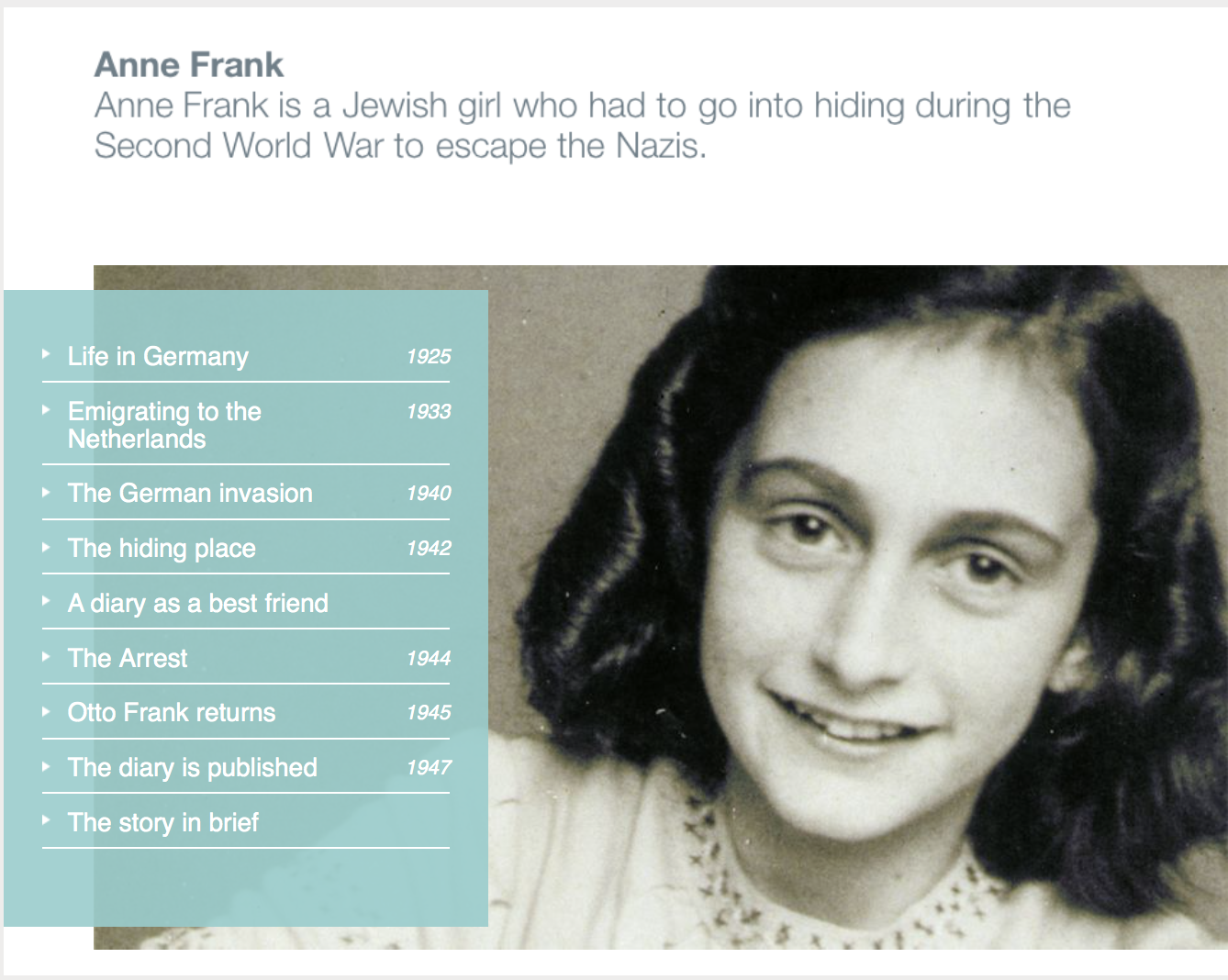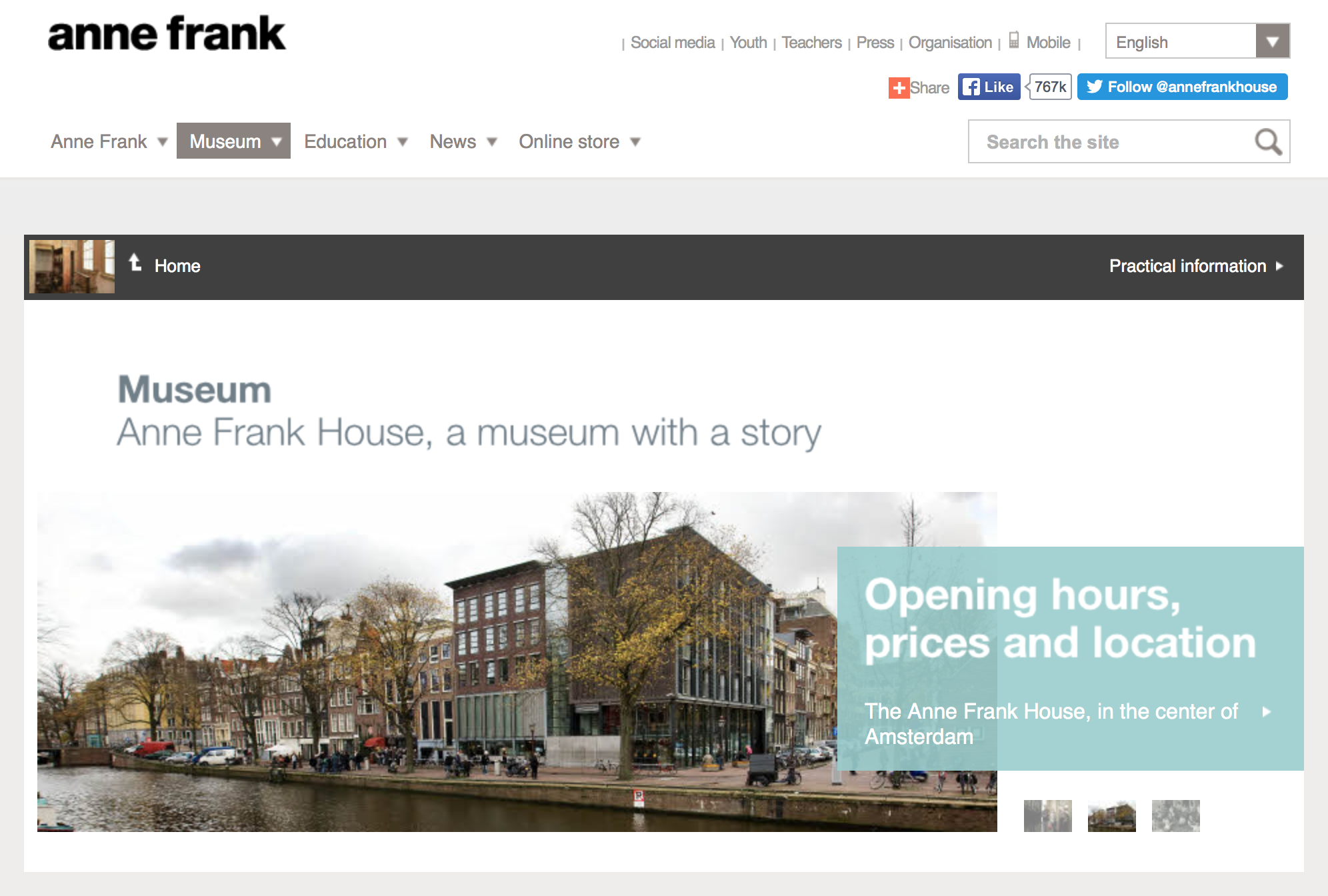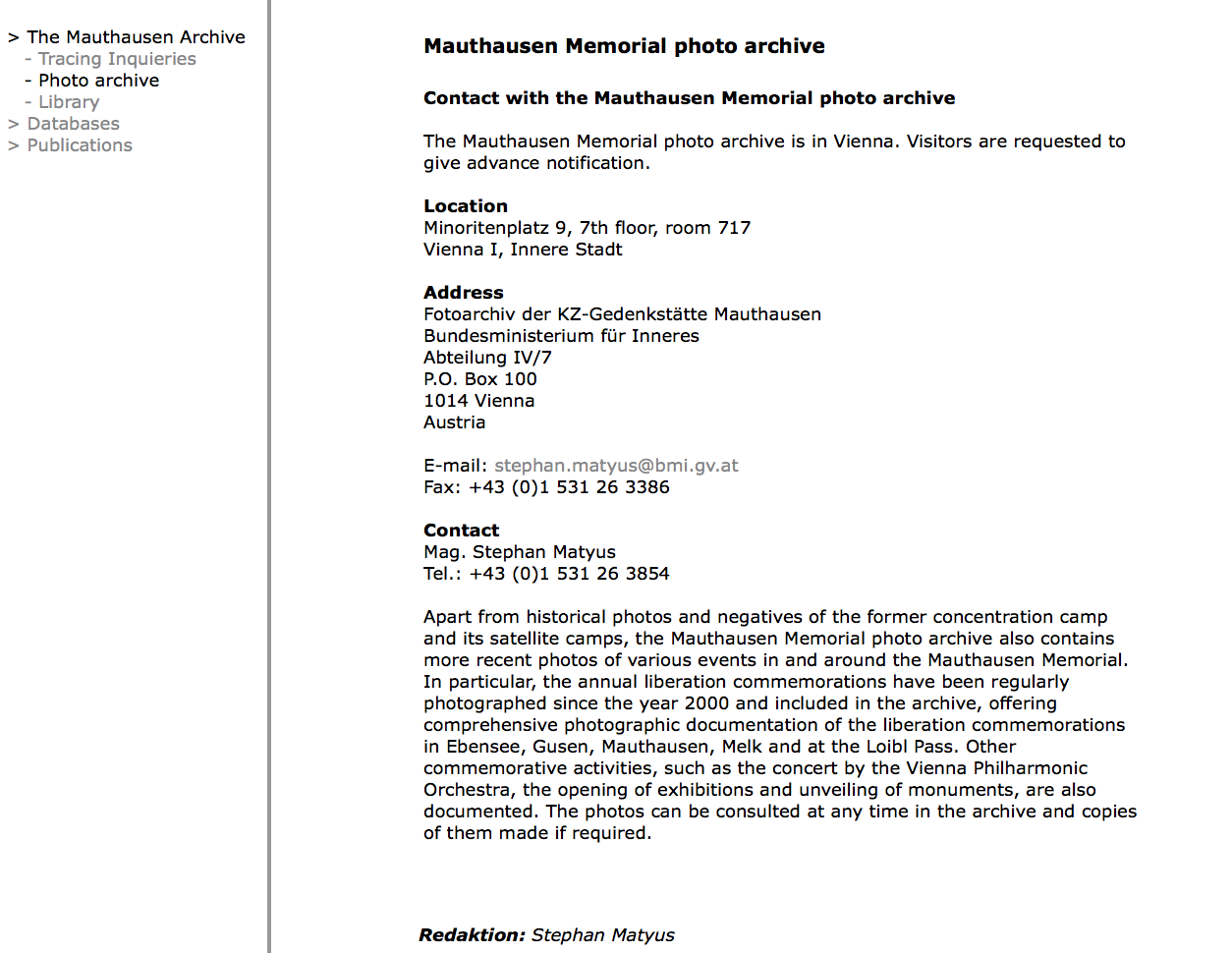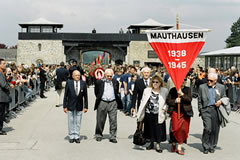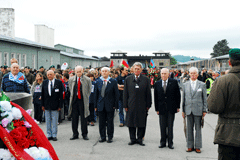[iframe src=”https://www.google.com/fusiontables/embedviz?q=select+col2+from+1dXt_rccUADIgPIo4qKKqdR27rEkSsjgEcOxeIrLc&viz=MAP&h=false&lat=50.45833474787679&lng=9.667917149999994&t=1&z=5&l=col2&y=2&tmplt=2&hml=TWO_COL_LAT_LNG”]
Resistance and Deportation History Centre, Lyon, France
Centre d’Histoire de la Résistance et de la Déportation (CHRD)
“The Resistance and Deportation History Centre…is a powerfully symbolic place in the service of history and remembrance.” – CHRD Lyon
Jewish Museum Berlin
Jüdisches Museum Berlin
About the Museum
The Jewish Museum Berlin opened in September 2001 and the Academy opened in 2012. There are three different sections in the museum: the permanent exhibition, the temporary exhibitions, and the Academy. The permanent exhibition “chooses an unusual perspective on the history of Germany and German-speaking territories” in order to tell the story and experiences of the Jewish people during the Holocaust.
Exhibitions and Collections
The permanent exhibition which “chooses an unusual perspective on the history of Germany and German-speaking territories” memorializes the Holocaust partially on its website. In addition to the many documents, artifacts, and photos which are posted on the site within their permanent exhibition, there are also special temporary exhibitions which have partial information and artifacts available.
The Academy of the Jewish Museum Berlin
According to the Jewish Museum Berlin’s website, “[t]he Academy of the Jewish Museum Berlin is a place for research, discussion, and the exchange of ideas on Jewish history and culture as well as on questions of diversity in society. The The Academy enriches the Museum’s wide spectrum of activities with Academy programs on Migration and Diversity and a Jewish-Islamic Forum both of which provide a platform for discussing highly relevant sociopolitical themes.”
Publications
The website provides catalogs which “supplement and illustrate special exhibitions with academic, essayistic or anecdotal contributions from relevant authors.” In addition, the website is a series comprised of “firstly the new studies of the Jewish Museum Berlin, and secondly historical documents which illuminate different aspects and eras of Jewish life as well as material for schools.” Lastly, a bilingual JMB Journal that comes out twice a year “looks at current themes, analyzing, discussing and shaping topical debates on politics and culture.”
Anne Frank Museum, Netherlands
Het Anne Frank Huis: Een Museum met een Verhaal
About the Museum
This museum website describes itself as “a museum with a story”. This website is offered partially in over thirty languages and completely in Dutch, English, German, French, Spanish, Italian, and Portuguese. The website is not just about the museum itself, but also about educating people about the life of Anne Frank and how it fits into the historical significance of the Holocaust and World War II.
Exhibitions and Collections
This part of the website is broken down into sections which explain practical information, collections, exhibitions, education, news, and other resources. The Collections and Exhibitions sections are not as extensive as the entirety of the museum. Instead, they have photos of mostly the house where Anne hid and wrote her diary. These sections highly suggest visiting or contacting the museum if more information is wanted.
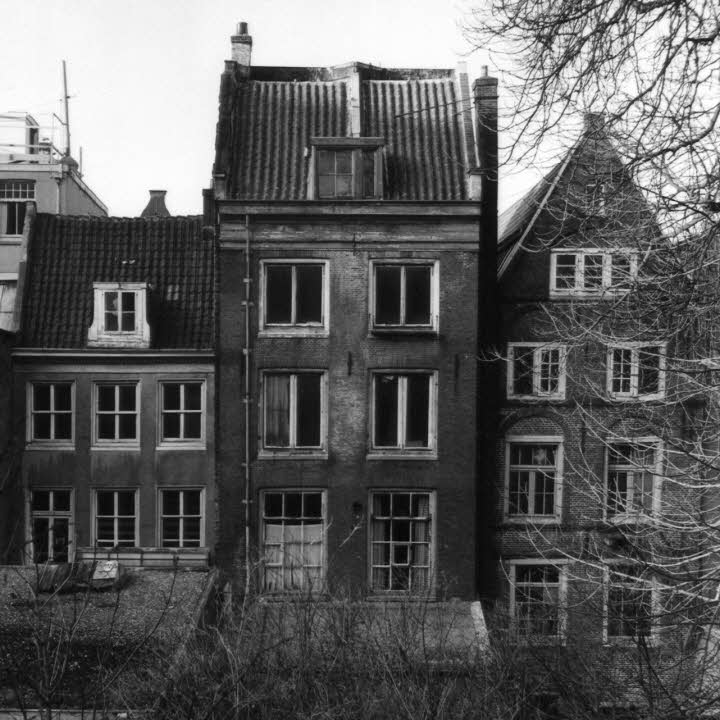
The Anne Frank Story
This section gives a brief breakdown of life in Germany, specifically for Anne Frank and her family, between the years of 1925 and 1947. This part of the website is extremely valuable. especially for those who have little to no experience with WWII or the Holocaust. This is the section which provides the most online information in relation to the collections and exhibitions section.
“Our little room looked very bare at first with nothing on the walls; but thanks to Daddy who had brought my film-star collection and picture postcards on beforehand, and with the aid of a paste pot and brush, I have transformed the walls into one gigantic picture. This makes it look much more cheerful…” (The Diary of Anne Frank, July 11, 1942)
Mauthausen Memorial Museum
KZ-Gedenkstatte Mauthausen

About the Museum’s Website
Although this museum website is available in German, English, French, Italian, Dutch, Polish, Spanish, and Czech, it is not very user-friendly if you are interested in seeing artifacts, photos, or other primary sources on the site itself. Instead, the site provides contact information within each subsection (see example below). The majority of the online commemoration of the Holocaust through the Mauthausen Memorial Museum is done by events held by the MKÖ (see examples below).
Commemoration of the Liberation of Mauthausen by the MKÖ in 2006
“Around 12,000 visitors took part on 7 May 2006 in the 61st commemoration of the liberation of Mauthausen concentration camp. This year’s commemoration was devoted to “Women and girls as inmates in Mauthausen concentration camp”.”
Commemoration of the Liberation of Mauthausen by the MKÖ in 2008
“Around 7,000 guests from all over the world took part in a commemoration on Sunday, 18 May 2008 to mark the 63rd anniversary of the liberation of Mauthausen concentration camp. The theme of the commemoration this year was European resistance to Nazism. The commemoration commenced as usual with a service at the Jewish monument at the Memorial, followed by an ecumenical service in the chapel and the traditional international youth march. Guests were welcomed by Federal Minister Erwin Buchinger.”
Exhibitions and Collections
The museum’s collections are extensive. It has both permanent and temporary exhibitions as well as a room of names, which consists of crime scene information, eye-witness stories, and photos of the concentration camp itself. Their online collection, however, is limited to large texts and very few photos.
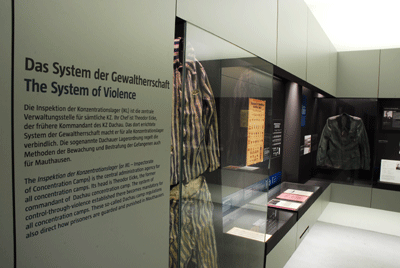
The Room of Names
“Currently more than 81,000 people who died at Mauthausen and its satellite camps between 1938 and 1945 are known by name. An effort was made to use the original spelling wherever possible. This Room of Names aims to show the scale of the mass murder of people from more than 40 countries and to create a dignified memorial for all victims that does not form hierarchies on the basis of victim groups.” -Mauthausen Memorial Museum
